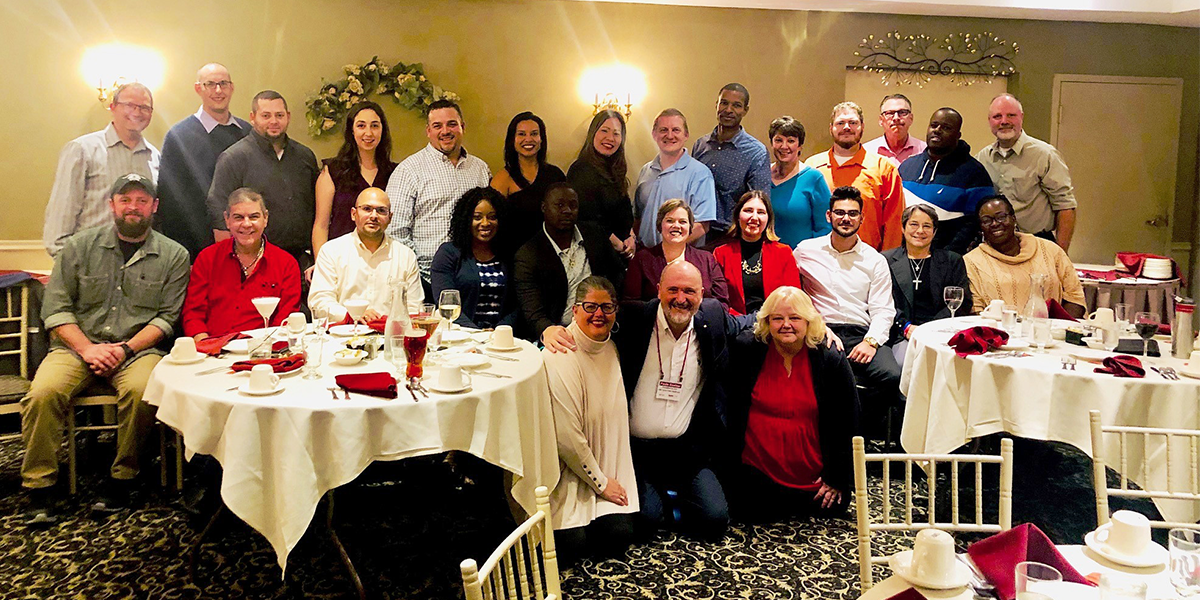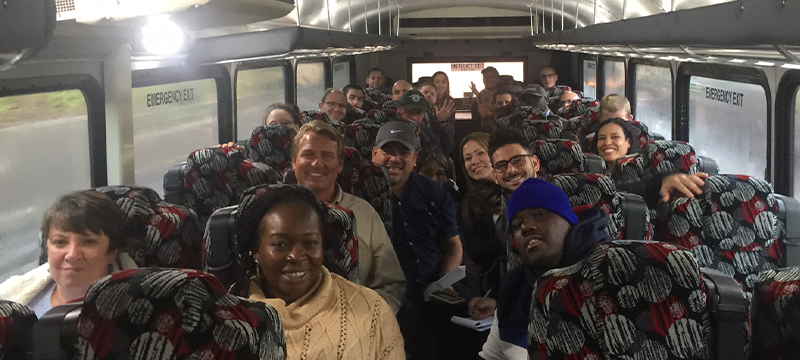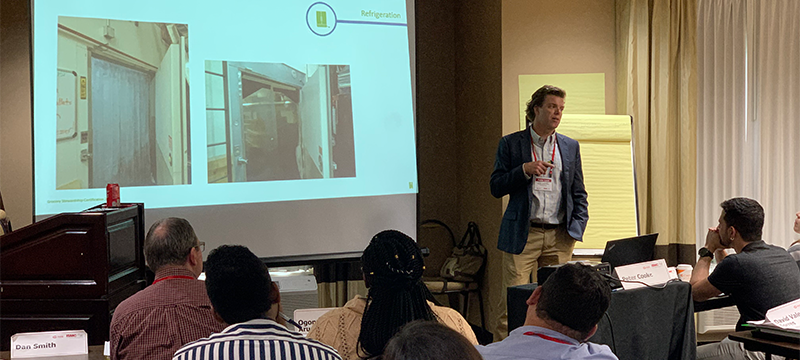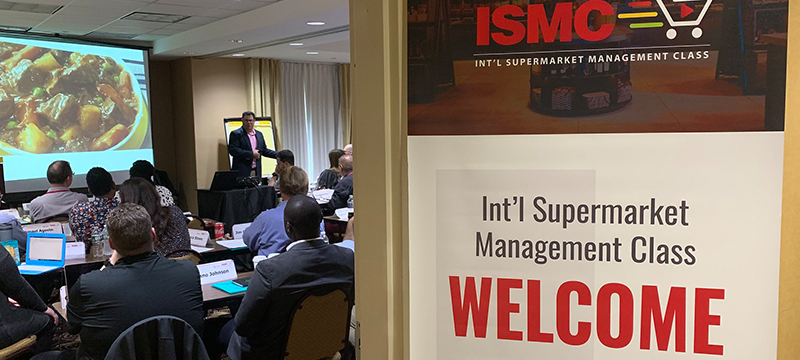Help Isom IGA recover from devasting floods

Key Takeaways from the Bozzuto’s-Sponsored East Coast Int’l Supermarket Management Class
Written by Jessica Vician
Oct 22, 2019
Participants at the recent East Coast International Supermarket Management Class got to see many of the classroom topics in action with a half day devoted to touring two Adams Hometown Market locations in Connecticut. Check out the key takeaways, including best practices in leadership and HR, the importance of investing in training, and how to make your store more sustainable.
STORE VISITS

The store visits were crucial to applying what participants learned throughout the week, providing an unforgettable highlight to the week’s curriculum. Ana Velazquez, the learning solutions director at the IGA Coca-Cola Institute, said the team from Adams Hometown Market was so insightful, the participants wanted to stay longer. “The first store visit was supposed to be 20 minutes—we left 40 minutes later,” she said. “They couldn’t get enough of it! They loved it.”
Participants were given ten questions to answer as they visited two stores: the first, a smaller, recently remodeled format located in Portland, features many prepared foods and a smaller center store; the second in Deep River is a standard format supermarket. The questions encouraged participants to recall the lessons learned in the classroom, like defining primary customers, identifying cross merchandising strategies, and noting sustainable initiatives.
Department heads were on hand to answer questions and explain the strategies behind their departments. After the visits, participants gathered in groups to discuss what they saw—specifically, defining strategies and looking at the industry trends in action.
Once they finished discussing, they presented their findings to the staff from Adams Hometown Market. Overall, both teams benefitted from the store visits. The class participants were able to apply what they learned from the week’s presentations and get ideas for their stores, and the Adams team received constructive feedback designed to help them further their store improvement strategies.
CLASSROOM INSIGHTS
In addition to the store visits, participants attended 22 presentations throughout four days of classes. Read on for highlights from some of attendees' most highly rated sessions.
How to Effectively Recruit and Retain Great Employees
Scott Grove, vice president of human resources at Bozzuto’s, discussed the three keys to a store’s people strategy success: recruiting, retention, and training.
“We are in the people business, not the grocery business,” Grove said. “You can have the best signage, the cleanest store, the best prepared foods, but if you have unhappy, unengaged associates, people won’t shop in your store.”
Here are his best practices for hiring and retaining great employees.
Recruiting- There’s no secret sauce to attracting candidates—you must always be doing it. Make the job and environment inviting. You want your store to be known as the best place to shop and the best place to work.
- Advertise job openings everywhere: in-store, online, etc. Always be receptive to meeting candidates, even if you don’t have an opening.
- Don’t shoot in the dark when selecting—remember to look for examples of things an applicant has done in the past to add some level of predictability to their success.
- Never sacrifice character in hiring—80 percent of turnover is caused by bad hiring decisions.
- The first day is crucial to retaining employees. Help make it memorable by:
- Ensuring the staff know a new hire is starting and are prepared to welcome them.
- Having their supervisor and your employees check in on the new person throughout the day.
- Creating an organized day: provide them with an overview, check in at the end of their shift, track what they learned, note what they still need to learn.
- Providing their uniform and any other supplies they may need on their first day.
How and Why to Invest in a Training Program
With employee turnover in grocery growing steadily year after year, you might be apprehensive of investing in training, worrying that after your investment, the employees will leave. But as Rouses University’s Ashley Spivey pointed out during the optional fifth day class, what happens if you don’t train your employees and they stay? The risk is far greater to operate a business with employees who aren’t well-trained than to train everyone and have a few leave.
During the class on how to create a training division for an established organization, Spivey explained that training takes place daily at your store, whether formally or not. New employees learn through observation and from tenured employees. To help your store grow, start with these training tips.
Identify gaps in growth and company needs.
Collaborate with everyone at the beginning, from store directors and HR to IT and marketing. Ask employees to identify training opportunities and to offer feedback. Challenge them to create solutions to problems.
Leverage employees and vendors.
Lean on your experts—ask department managers to lead a training on their area of expertise. For example, produce experts can teach how to identify produce, and cashiers can offer training on customer service and interaction. Ask vendors for assistance in training and marketing content.
Train the multipliers.
Start your training to build a bench, so each manager can train their direct reports and so forth. First train store directors along with assistant store directors, then department managers along with assistant department managers, and so on.
The future starts now.
The training you implement now will create a store culture, which will continue on in new hires. Remember that these efforts influence the next generation of employees (and shoppers) in your store.

Save on Operating Costs With These Free Energy Savers
"Grocery store owners realize they need to be resourceful if they want to survive on a 1.7 percent profit margin," Peter Cooke, director of the Grocery Stewardship Council, said. "They can’t afford to be wasteful but they can’t afford to take risks on innovative strategies either."
By following five small actions outlined in Cooke’s presentation on operational practices that save money and resources, retailers can make their stores more eco-friendly and save $15,000 a year in energy costs. For independent grocers, these small changes can improve a store's energy efficiency and increase that 1.7 percent average profit margin.
Check your store to implement these best practices in energy efficiency.
- Keep air vents open—don’t block them. This includes the vents that may be blocked by overstocked open refrigerator cases.
- Close open doors. From entrance and exit doors to refrigerator doors, keep all doors closed when not in use.
- Keep humidity out of the store. Maintain door seals, prevent and treat leaks, and install an air curtain at the entrance to the walk-in freezer.
- Turn appliances off at night. If you’re not using an appliance after-hours, turn it off to save energy.
- Turn off vending machine lights. It’s a simple way to reduce energy use.
These tips are just the beginning of the learning opportunities offered by the IGA Coca-Cola Institute. Visit the website at www.igainstitute.com and encourage your employees to take advantage of the Institute's online training courses for more education.
Previous Story
← Learning from Each Other

No Comments Yet
Let us know what you think